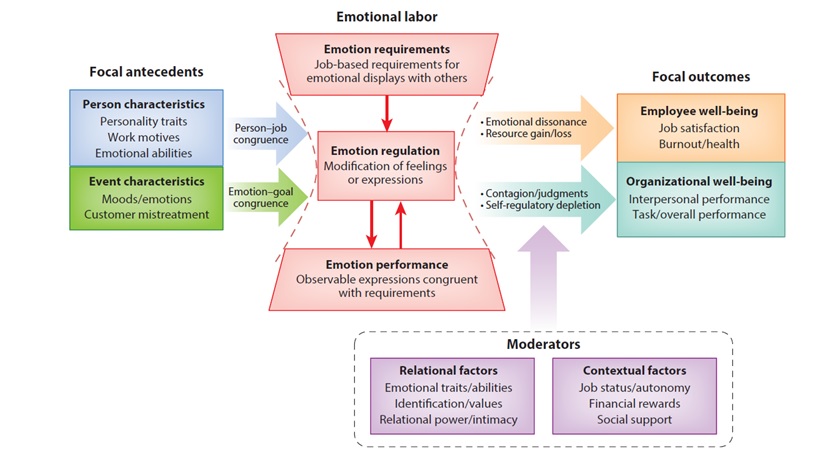Invisible Burdens
by Katie Bonnett
Women are taking on more stress than is necessary in the household. This comes from a difference in the responsibilities of hetero-sexual household members. When the work balance between couples gets to be too disproportionate, it creates stress on the person who does more work. Often, the burden falls on the woman in the relationship.
Emotional labor is “the invisible work necessary to manage households, often in spite of working outside the home as much as their partners.” Even before the pandemic women were carrying the majority of emotional labor. “[M]ore than 60 percent of both men and women reported that women tend to remind their partners more often about things that need to be done.” Males and females issue different types of reminders, according to researchers. “[M]en were more likely to issue reminders about things from which they’d personally benefit, such as making sure their wives remembered their promise to buy him a new suit jacket for a work party, whereas women’s reminders were typically more selfless.” Now, after the pandemic, this disparity is worse. One quote from a working mother stated that “I’ve always taken the emotional burden of playdates, doctors visits, school needs and birthday parties. So with her at home, I definitely feel like I’m doing the majority of the effort to come up with fun ideas and things to keep her engaged.” The reason why emotional labor is such an important issue is because of its consequences.

Grandey, A. A., & Gabriel, A. S., CC BY-SA 4.0, via Wikimedia Commons
The pandemic also presents different emotional costs. Emotional costs are the negative emotional or mental health consequences of emotional labor. One of these emotional costs is stress, “emotional labor has a strong correlation to heightened stress.” One way emotional labor could be measured is by asking who carries more of the emotional burden in households. An example of how the burden of emotional labor often falls on women comes from a quote from a mother: “My 5-year-old jumps on the ‘mommy I need you’ train as soon as the baby gets started. Today I took a fifteen-minute drive to get a break, was going to run an errand, and changed my mind about going into a store. It’s weighing on me that if I get sick, the stress on the rest of my family would go wild.” To address the emotional costs, we must examine the reasons why they occur.
Childcare, as well as other duties surrounding the care of children, create much of the emotional costs women face. “Just by being a working mother, women are 28% more likely to experience burnout than fathers.” Before the pandemic, according to one study, “for the women who experienced work and child care conflicts, their mental health decreased.” After the pandemic, “[a]mong parents/caregivers who lost childcare, they reported significantly higher rates of stress and anxiety.” Since these mental health issues were prevalent before the pandemic, the issue of childcare is even more important today.
The imbalance in gender roles also has an effect on women’s careers. Before the pandemic, “[c]hildcare challenges, coupled with low-wages and irregular schedules, ma[d]e it difficult for many mothers to stay in the workforce.” Early in the pandemic shutdown, “women either took time off their jobs to care for children, or they worked more hours on nights and weekends while balancing domestic duties.” This dependence on women to complete housework and childcare often costs them their careers. It also highlights the fact that there is a gender imbalance in both the home and the workplace. “Only 24% of women have higher salaries than their husbands,” which is a contributing factor to women leaving the workforce to care for their children. For this reason, “in times of economic crisis, when decisions need to be made about the economic security of our families, the job that brings in more money takes priority.” With more women leaving work and caring for their children in the home, it becomes much easier for women to take on the burden of emotional labor in the home. This results in increased emotional consequences.
What can we do to lessen the burden on women in the home?
Could the government provide services to these families? Should family members provide help for the households that are struggling? How can society help women struggling with emotional labor? The people who should be asking these questions are the partners of the women doing the emotional labor. The partners are the ones closest to the women, so they would have more motivation to help decrease the emotional costs the women are facing. To decrease those emotional costs, gender roles in heterosexual partnerships should get discussed within each household. These conversations should ensure that both members of the household are not suffering an unreasonable amount of stress. If there is more communication about the effects of emotional labor, it could help more people to recognize the emotional labor women do. Once people have a better awareness of the issue, it leaves the door open for both partners in the relationship to put forth effort to decrease the strain on the person carrying the majority of the emotional labor.



